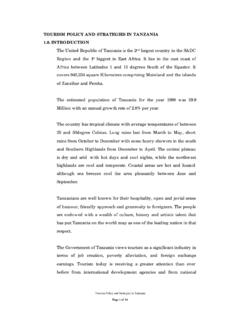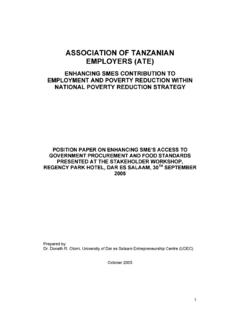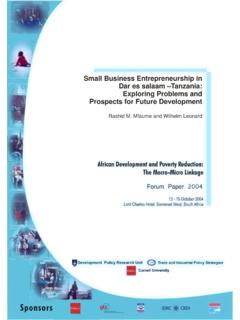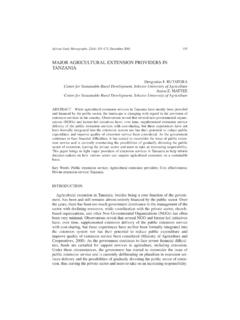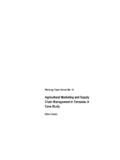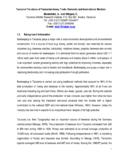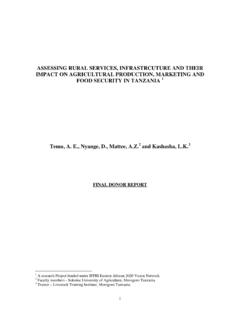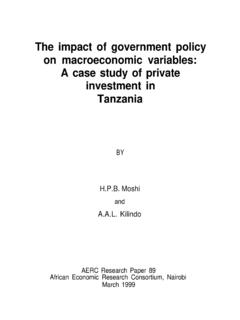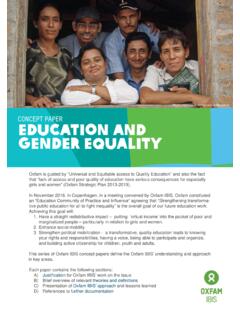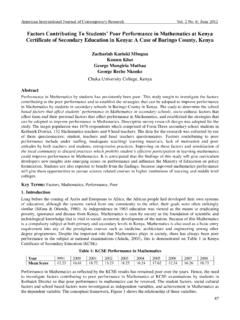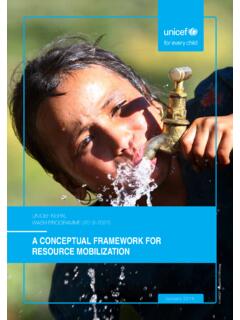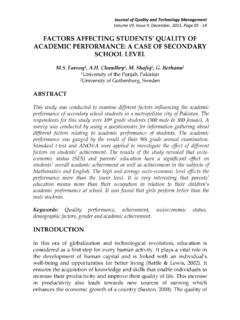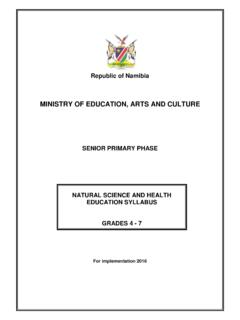Transcription of GIRLS' EDUCATION IN TANZANIA
1 DRAFT: Oct. 2003 2003 TANZANIA Country Highlight GIRLS' EDUCATION IN TANZANIA Tanzanias efforts to see all school -aged children in primary school got well underway in 2002 with implementation of the Primary EDUCATION Development Plan (PEDP) where the planned enrolment of 1,500,000 children was exceeded. The abolition of mandatory contributions including school fees and relaxation of the uniform requirement were among the steps taken under the EDUCATION sector reform process, which aims to have all primary school aged children in school by 2006. Major educational issues for girls are late entry into primary grade one, early marriage, poor performance in the Primary school Leaving Exam, and high rates of repetition.
2 At the secondary level, gross enrolment is an alarming 5% for girls and boys. The gender gap in secondary school could increase after the abolition of the quota system for girls. THE BARRIERS Socio-cultural beliefs and practices. Early marriage and pregnancy prevent girls from finishing school . Girls who get pregnant are expelled and the pregnancy is considered to be the girls fault. Gender biased socialization in school . While assertive behaviour is promoted among boys, passive behaviour is encouraged among girls. Girls are called on to perform domestic duties for teachers at school , such as fetching water, reinforcing gender stereotypes and taking time away from learning.
3 Economic factors . Despite the abolition of school fees, parents are often unable to meet other school costs. This poses a big challenge on the retention of those enrolled. Some parents migrate to distant farms or other districts during the rainy seasons and their children are prone to expulsion from school if they are absent for three consecutive months. Girls normally work to supplement household income while lack of formal employment opportunities discourage children from completing the primary cycle. Health and HIV/AIDS. The high number of school pregnancies is an indicator of unprotected sexual activity and the high vulnerability of girls to HIV infection (rates of infection are six times higher for girls than boys).
4 Moreover, girls who are normally caregivers become especially burdened when HIV/AIDS strikes the family, preventing them from regular school attendance. UNICEF IN ACTION UNICEF provides technical support to the Government through participation in the Expanded Enrolment, Quality, and Institutional Arrangement Technical Working Groups, as well as the Basic EDUCATION Development Committee which is a policy decision making body. Through the African Girls' EDUCATION Initiative, UNICEFs focuses on: Policy advocacy to ensure gender sensitivity and addressing critical issues of girls access to schooling. Ensuring girls retention and improved performance in school through implementing Child Friendly school initiatives to create a safe and supportive learning environment for girls and boys.
5 Addressing the needs of out-of- school girls and boys through Complementary Basic EDUCATION in TANZANIA (COBET). With the successful mainstreaming of COBET, the learners have done just as well as those in formal schools in national examinations, so UNICEF is focusing on supporting COBET scaling up to cater for the 11-13 who have been left out of the formal system. Policy and strategy development for prevention of HIV infection among girls and boys and for mitigating the impact of HIV/AIDS on the EDUCATION system. KEY ACHIEVEMENTS UNICEF has: Continued to highlight the need to change the policy on the expulsion of pregnant schoolgirls through the gender task force of the Ministry of EDUCATION and Culture.
6 Conducted community dialogue on factors affecting girls EDUCATION and making the community members part of the decision-making process for addressing these factors . Initiated an out of school non-formal EDUCATION programme in the target districts, one of which (Kisarawe) has the highest HIV/AIDS infection rate in the region and some of the lowest transition rates to secondary school in the country (5-7%, with some wards sending no children on to secondary school ). UNICEF/HQ96-1387/ GIACOMO PIROZZI DRAFT: Oct. 2003 2003 TANZANIA Country Highlight GIRLS' EDUCATION : TANZANIA AT A GLANCE 1,842,00052%Ranking in Human Development Index: 160 out of 175 Expenditure on EDUCATION as % of gross domestic product: literacy rate:Female(67%)Male(84%) EDUCATION system:Pre-primary5-6 yearsPrimary 7-13 yearsSecondary 14-19 yearsCompulsory 7-13 yearsLanguage of instruction: EnglishPupil/teacher ratio:Pre-primaryno dataPrimary40/1 Secondaryno dataShare of child labourers (5-14): 32%Number of children (0-15) living with HIV/AIDS:no dataHIV/AIDS orphans under 15.
7 No dataPopulation: millionXXOut-of- school girls(primary school level)Primary net enrolment ratio(gender gap -3%)Secondary net enrolmentratio (gender gap 0%)Pre-primarygross enrolment ratioSources: HDI: UNDP, Human Development Report 2003 EDUCATION system: UNESCO, Global EDUCATION Digest 2003 Expenditure, pupil/teacher ratio, pre-primary GER, primary NER, secondary NER, repeaters, reaching grade 5: UNESCO, UIS statistical tables, September 2003 HIV/AIDS: UNAIDS, Epidemiological fact sheets by country, July 2002 Others: UNICEF, The State of the World s Children 2004, inprimary educationChildren reachinggrade 5 Additional information at data18 or older48%Under 1852%BoysGirls5%5% FUTURE PLANS TANZANIA is a participant in the UNICEF Girls EDUCATION Acceleration Strategy and is also a World Bank EFA Fast Track Initiative country.
8 Participation in both initiatives will affect the scale and impact of future programmes in EDUCATION . UNICEF will continue to work within its girls' EDUCATION programme, and together with its partners, will build on successful programmes already initiated in Masasi and Kisaware Districts, ensuring that they have a high level of gender-sensitivity and solid commitment to girls EDUCATION by: Continued support for community dialogue and the use of community theatre as a strategy for discussing gender issues, gender, sexuality, HIV/AIDS, school feeding, and water and sanitation issues with members of the wider community beyond schools, including family members, out-of- school children, and village committees.
9 Training teachers in gender, sexuality, HIV/AIDS, life skills, and water and sanitation activities; Training of school -based peer educators on gender, sexuality, HIV/AIDS and life skills Review and adaptation of available HIV/AIDS and life skills materials for primary schools. PARTNERSHIPS Partners with UNICEF TANZANIA include the Ministry of EDUCATION and Culture; President's Office - Regional Administrative and Local Govt (PORALG); Ministry of Labour, Youth Development and Sport; TANZANIA Institute of EDUCATION (TIE); UNESCO through UNDAF; as well as several local NGOs.
